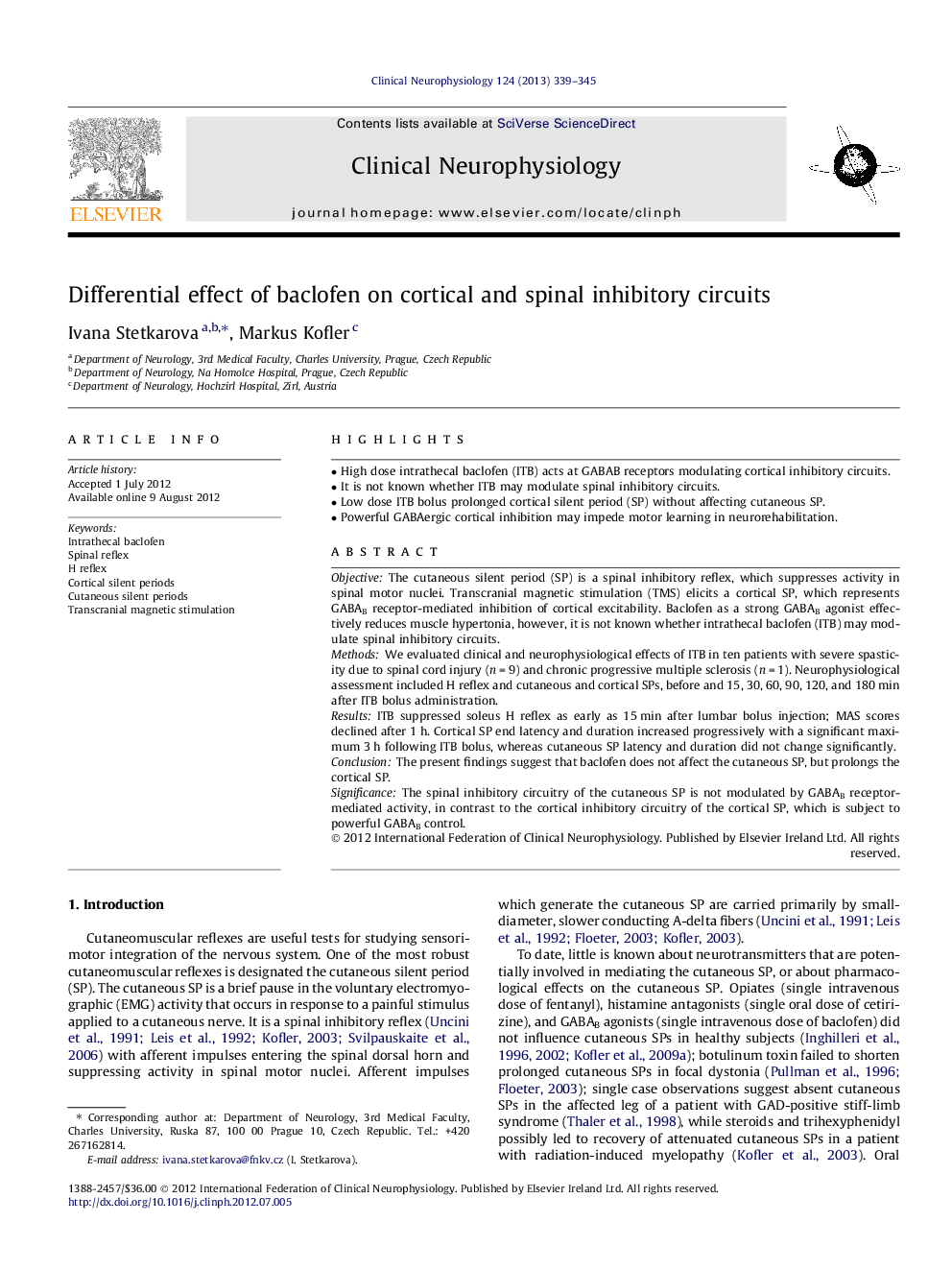| Article ID | Journal | Published Year | Pages | File Type |
|---|---|---|---|---|
| 3044614 | Clinical Neurophysiology | 2013 | 7 Pages |
ObjectiveThe cutaneous silent period (SP) is a spinal inhibitory reflex, which suppresses activity in spinal motor nuclei. Transcranial magnetic stimulation (TMS) elicits a cortical SP, which represents GABAB receptor-mediated inhibition of cortical excitability. Baclofen as a strong GABAB agonist effectively reduces muscle hypertonia, however, it is not known whether intrathecal baclofen (ITB) may modulate spinal inhibitory circuits.MethodsWe evaluated clinical and neurophysiological effects of ITB in ten patients with severe spasticity due to spinal cord injury (n = 9) and chronic progressive multiple sclerosis (n = 1). Neurophysiological assessment included H reflex and cutaneous and cortical SPs, before and 15, 30, 60, 90, 120, and 180 min after ITB bolus administration.ResultsITB suppressed soleus H reflex as early as 15 min after lumbar bolus injection; MAS scores declined after 1 h. Cortical SP end latency and duration increased progressively with a significant maximum 3 h following ITB bolus, whereas cutaneous SP latency and duration did not change significantly.ConclusionThe present findings suggest that baclofen does not affect the cutaneous SP, but prolongs the cortical SP.SignificanceThe spinal inhibitory circuitry of the cutaneous SP is not modulated by GABAB receptor-mediated activity, in contrast to the cortical inhibitory circuitry of the cortical SP, which is subject to powerful GABAB control.
• High dose intrathecal baclofen (ITB) acts at GABAB receptors modulating cortical inhibitory circuits. • It is not known whether ITB may modulate spinal inhibitory circuits. • Low dose ITB bolus prolonged cortical silent period (SP) without affecting cutaneous SP. • Powerful GABAergic cortical inhibition may impede motor learning in neurorehabilitation.
